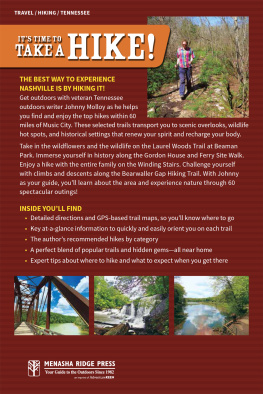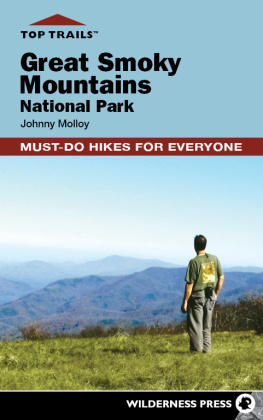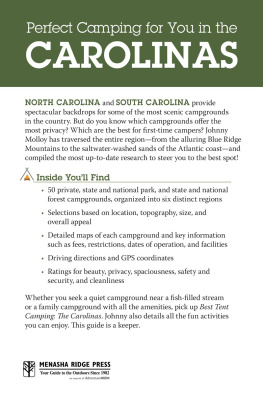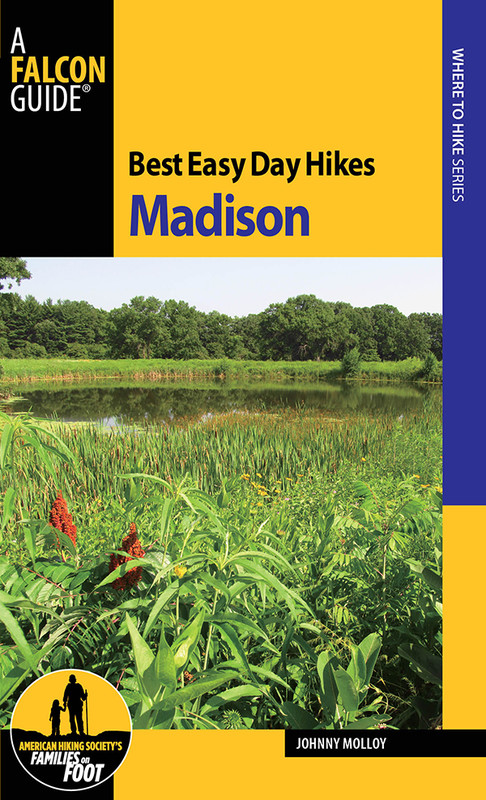
Best Easy Day Hikes Series
Best Easy Day Hikes Madison
Johnny Molloy

Copyright 2014 by Morris Book Publishing, LLC
ALL RIGHTS RESERVED. No part of this book may be reproduced or transmitted in any form by any means, electronic or mechanical, including photocopying and recording, or by any information storage and retrieval system, except as may be expressly permitted in writing from the publisher. Requests for permission should be addressed to Globe Pequot Press, Attn: Rights and Permissions Department, PO Box 480, Guilford, CT 06437.
FalconGuides is an imprint of Globe Pequot Press.
Falcon, FalconGuides, and Outfit Your Mind are registered trademarks of Morris Book Publishing, LLC.
Maps: Daniel Lloyd Morris Book Publishing LLC
Project editor: Julie Marsh
Layout: Mary Ballachino
Library of Congress Cataloging-in-Publication Data is available on file.
ISBN 978-1-4930-0727-1

The author and Globe Pequot Press assume no liability for accidents happening to, or injuries sustained by, readers who engage in the activities described in this book.
Contents
Overview Map
Map Legend
Acknowledgments
Introduction
How to Use This Guide
Trail Finder
The Hikes
1 Lake Kegonsa Loop
2 Lake Farm County Park
3 Turville Point Conservation Park
4 UW Arboretum Big Spring Hike
5 Curtis Prairie at UW Arboretum
6 New Glarus Woods Hike
7 Donald Park Hike
8 Blue Mound Loop
9 Oak Grove Trail
10 Yellowstone Double Loop
11 Pine Cliff Trail
12 Stephens Falls Hike
13 Shot Tower Hike
14 Natural Bridge Hike
15 West Bluff Loop
16 East Bluff Loop
17 Devils Doorway Loop
18 Ice Age Trail at Indian Lake Park
19 Table Bluff
20 Governor Nelson Circuit
About the Author
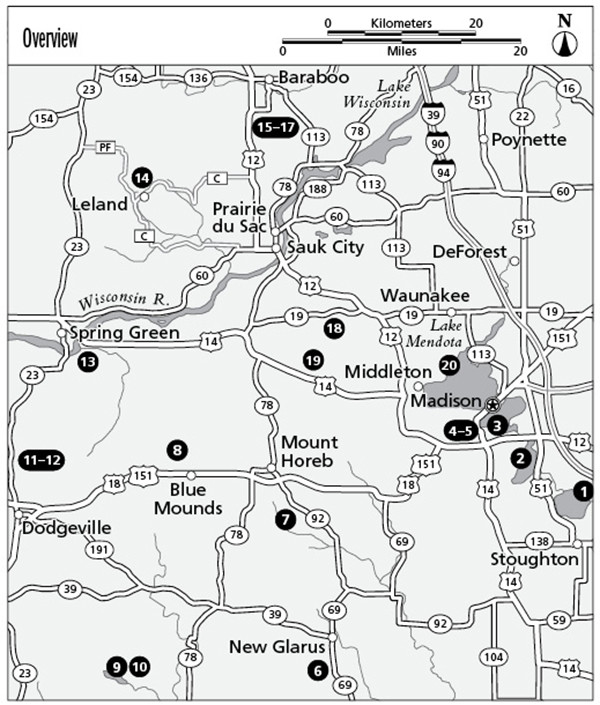
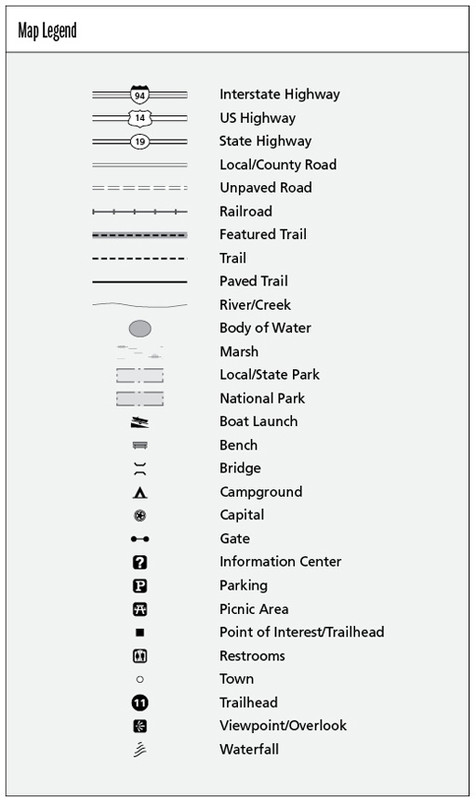
Acknowledgments
Thanks to all the people who helped me with this book, primarily Keri Anne Molloy for all her companionship on the trail, for driving, and for other trail work. Thanks to the people at FalconGuides, especially Katie Benoit. Thanks to DeLorme for their accurate Global Positioning Systems and to Sierra Designs for quality tents and outdoor clothing. In addition, thanks to all the park personnel who answered my incessant questions while trying to manage these jewels of greater Madison. The biggest thanks go to the local southern Wisconsin hikers and trail builders, as well as those who visit this scenic slice of America, for without yall, there would not be trails in the first place.
Introduction
The astonishing view stretched out beyond the bluff and water. I stood on the sandstone outcrop. Hundreds of feet below lay Devils Lake, a Southern Wisconsin icon. East Bluff, with its rock cliffs and massive boulder gardens, stretched in the distance. Forested lowlands extended to the yon. West Bluff was but one of many scenic and rewarding destinations in this guide and encapsulated this marvelous parcel of greater Madison. I mentally reflected on other destinations, recounting all the worthwhile hikes in the area. To the south the trails along Lake Waubesa at Lake Farm Park displayed another destination where hikers could walk a scenic shoreline. The University of Wisconsin Arboretum, near Lake Wingra, presented pathways skirting past Indian effigy mounds and amid several forest types and around the famed Curtis Prairie, site of the worlds first prairie restoration project. Turville Point Conservation Park was yet another in-town hike. Here, trail trekkers could walk through an oak savanna and gain a lakeside view of the Madison skyline, highlighted by the Wisconsin state capitol.
Rolling woods and big trees characterized the hike at New Glarus Woods State Park. Fast-moving Deer Creek at Donald Park provided contrast with the lakes on other hikes. The views from the top of Blue Mound still echo in my memory. The prairie hikes at Lake Kegonsa and Governor Nelson State Parks allowed me to fully explore the all-important prairie ecosystem. Yellowstone Lake State Park had its own oak groves, savannas, prairies, and lake views. Of course, Governor Dodge State Park had its two lakes about which to brag. The hike along Pine Cliff was a menagerie of stone and evergreen. The hike to Stephens Falls stands out for its historic as well as natural history. The cataract tumbles over a stone face into a wooded glen. The stream then pours through a geological wonder of a canyon. I saw the canyon from the bottom and the top from stone bluffs. The hike was topped off with a visit to a homesite, complete with interpretive information.
Speaking of history, how could I forget the hike to the shot tower atop bluffs overlooking the Wisconsin River? The views extended to the distant horizon and the labor obviously involved in digging the shot shaft was hard to comprehend. The past came alive at Natural Bridge State Park, where aboriginal Wisconsonians sheltered near the largest natural arch in the state. The greater Madison landscape was affected in other ways, namely the glaciers that scraped much of the state. A pair of hikes on the Ice Age Trail at Indian Lake Park and near Table Bluff showcased still other fascinating landscapes through which to hike. And it all came back to the panoramas from the bluffs ringing Devils Lake. I considered the fine views, extensive history, and variety of hikes around Madison and concluded that the greater capital area is truly a fine place to hike.
With this book in hand and willing feet, you can explore southern Wisconsin. No matter where you go, the trails in this book will enhance your outdoor experience and leave you appreciating the natural splendors of greater Madison. Enjoy.
The Nature of Madison
Greater Madisons hiking grounds range from singletrack wooded paths along lakes and hills to well-marked nature trails to strolls on interpretive paths. Hikes in this guide cover the gamut. While by definition a best easy day hike is not strenuous and generally poses little danger to the traveler, knowing a few details about the nature of southern Wisconsin will enhance your explorations.
Weather
Southern Wisconsin certainly experiences all four seasons. Summer can be warm, with sporadic hot spells. Morning hikers can avoid any heat and the common afternoon thunderstorms. Hiking becomes more comfortable when the first northerly fronts of fall sweep cool clear air across the Badger State. Crisp mornings give way to warm afternoons. Fall is drier than summer. Winter will bring frigid subfreezing days, chilling rains, and significant snow. However, a brisk hiking pace will keep you warm. Each cold month has a few days of somewhat mild weather. Make the most of them. Spring will be more variable. A warm day can be followed by a cold, snowy one. Spring rains bring regrowth but also keep hikers indoors. However, any avid hiker will find more good hiking days than they will have time to hike in spring and every other season.
Critters
Greater Madison trail treaders will encounter mostly benign creatures on these trails, such as deer, squirrels, wild turkeys, a variety of songbirds, and rabbits. More rarely seen (during the daylight hours especially) are coyotes and raccoons. Deer in some of the parks are remarkably tame and may linger on or close to the trail as you approach. If you feel uncomfortable when encountering any critter, keep your distance and they will generally keep theirs.
Next page


